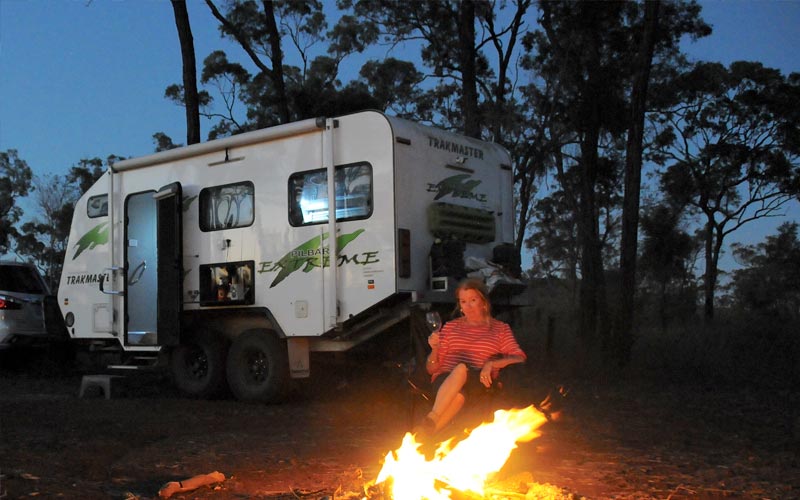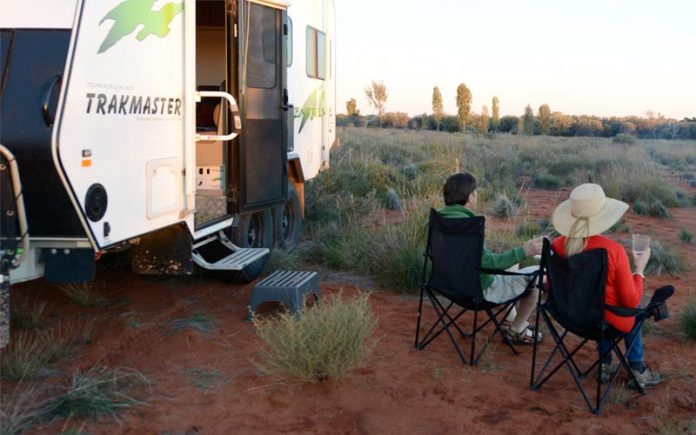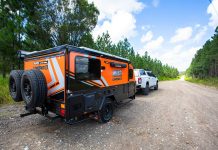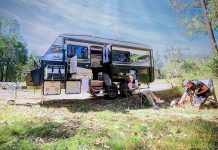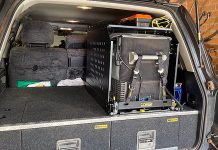The majority of caravans are today sold to some degree on their ability to allow you to ‘free camp’. Sounds good, but not every caravan is properly equipped to do it and not every caravan buyer really wants to.
‘Free camping’ conjures up romantic outback images. Just you, your caravan and one million stars above. Waking up to the twitters of birds rather than the caravan park’s mower and your neighbour’s diesel engine. Enough shelter and enough power for a leisurely hot breakfast amidst nature. Enough water for a hot shower and a way to deal with the resulting waste water that threatens to turn your piece of mother earth into mud.
A starting point is determine what you really need to camp off the power grid. Boiled down to the essentials, this means being self-sufficient of power, water, and heating or cooling, for at least a consecutive night or two ‘off the grid’ – in other words, without plugging in to 240V power or drawing on town water.
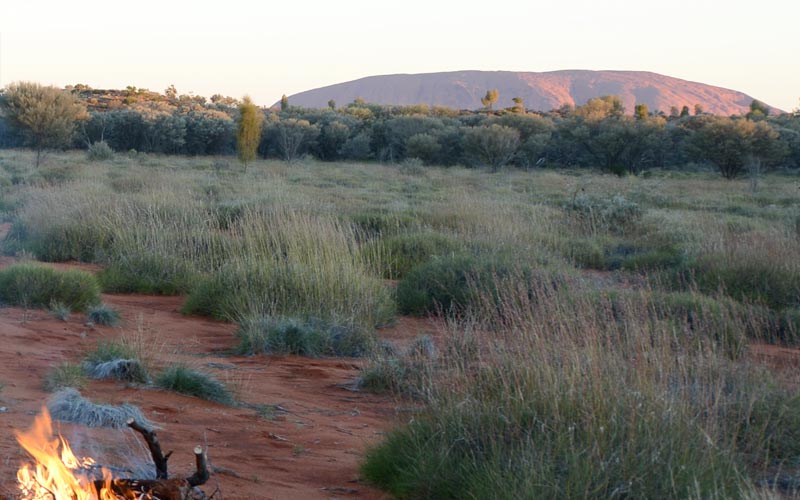
POWER
Most caravans, as distinct from small camper trailers, have enough chassis real estate to carry at least an 80L fresh water tank, a 100 or 120Ah AGM battery or two, with (ideally) a 100-120W solar panel (but preferably more) on the roof to ‘feed’ it.
- Your caravan is plugged into a separate Anderson plug on your tow car, which in turn is wired directly to its battery. This is essential, because if you are not pumping power back into your battery while you’re travelling, when you arrive at a new campsite, it’s possible your battery will be quite depleted. Those little things like your 12V water pump, which feeds your kitchen and bathroom taps and your cassette toilet flush, your interior and exterior lighting, perhaps a 12V fan, the piezo lighter that ignites your gas cooktop, and even that 12V radio and TV, can all drain away your precious battery power.
- You don’t park under trees. Solar panels need light, not heat, to work at their optimum. So it might seem counter-intuitive, but necessary, to park your caravan in the open to capture the maximum amount of sunlight on a 40-degree scorcher, rather than to search for shade. Anyone who has tried to free-camp for days on end in the beautifully shaded campground of Adele’s Grove near Queensland’s Lawn Hill National Park will understand. Without enough sunlight to send a charge though your panel to your battery, you are continually drawing down on your power reserves.
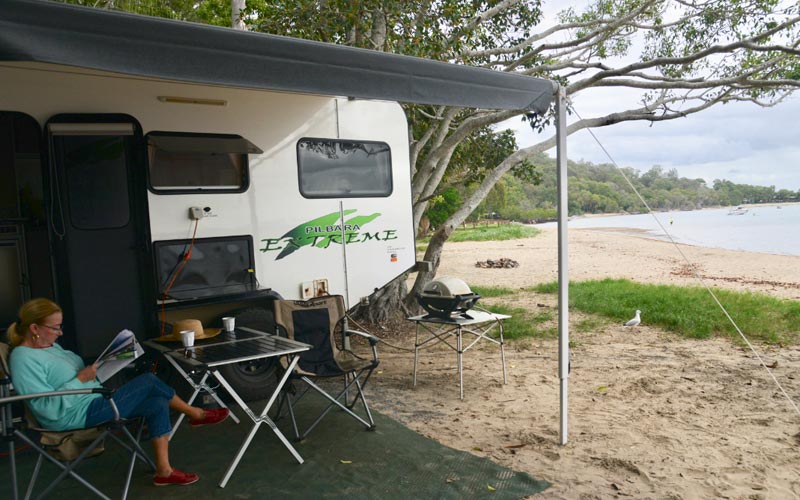
HUNGRY FOR POWER
Conserve your energy. You might have a large power inverter and all the 12V luxuries of home, but they are all power-hungry. The 12V compressor fridges frequently fitted to offroad caravans are one of the worst offenders.
Unless you have at least 200-250Ah of battery power, I’d prefer a good old fashioned three-way (gas, 12V, 240V) fridge for shortterm free-camping, as gas is readily available and it’s easy to carry a spare full 4.5kg or 9kg cylinder if necessary. And don’t even entertain for a second the idea of running a second portable fridge as well for your drinks off the same meagre power source!
Keep your fridge cool. If you can, park your van so the fridge side doesn’t get the full heat of the afternoon sun. Some caravans with 12V fridges have external body vents that you can open to allow your fridge to ‘breathe’ better and operate more efficiently. Only cool and heat what’s necessary. Unless you’re planning a party, don’t waste energy cooling things that you don’t need, or heating things more often than necessary.
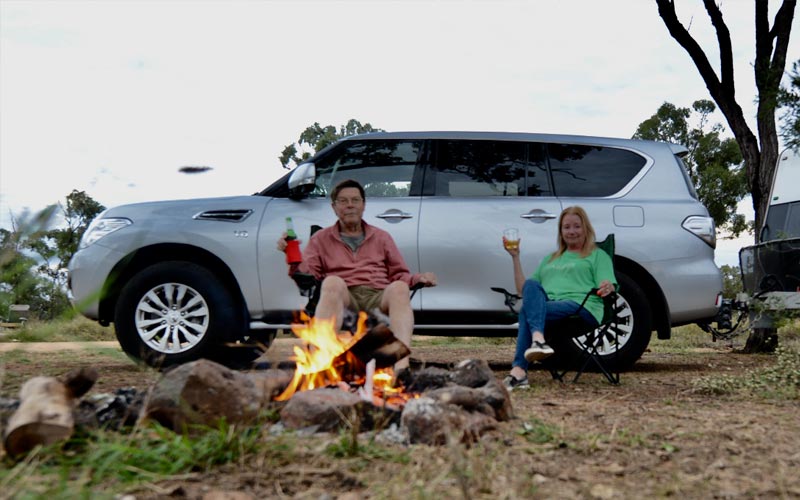
CONSIDER A GENERATOR
It might be a good idea to carry a portable generator and some fuel just in case. It may be 40 degrees, with the only respite found indoors with the air-conditioner on. But be sure that generator will start the AC first!
The rooftop Truma unit has a ‘soft start’ function that requires less than 2kVA to fire it up, while afterwards it will draw only out about 1.65kVA to run. Other ACs require up to 2.5kVA to start. And if you have a big inverter, don’t assume that a 3000W unit will start and run your caravan AC. It might not.
Check the specs and test it before you go and expect it to be power-hungry. Of course, you can overcome a lot of this ‘range anxiety’ by making sure you have more battery and solar power to start with. But this costs extra money and adds weight. I’d regard about 200-250Ah of batteries fed by a good solar charger drawing from about 300W (two 150W panels) of solar on the roof as a good standard for anyone planning regular shortterm ‘off grid’ camping.
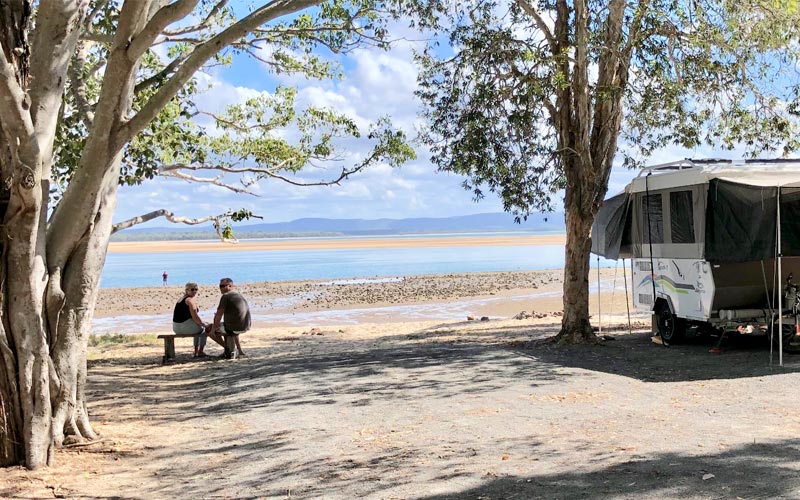
WATER WISE
What about water? The standard today is about 80-200L of fresh water capacity split into two tanks straddling the axle line, plus 75-80L of grey water holding capacity. Why do you need to capture grey water? Well, it’s much more neighbourly and environmentally friendly than letting it flow underneath your van or your neighbour’s van!
If you don’t have a grey water tank, a 20L portable jerry can connected to your waste outlet will do the job, as this is about what a travelling couple should generate in a day. If you’re short of fresh water capacity, a separate 20L container for fresh water and drinking is another simple solution. And if you need more cooling capacity, a portable car fridge and a bag of ice will give you at least another 24 hours or so, as caravanners 30 years ago, or more, would have done.
We do complicate things, don’t we?
